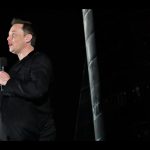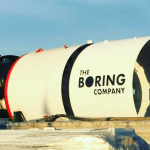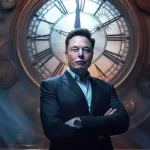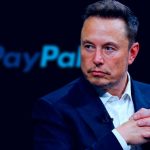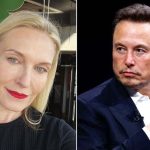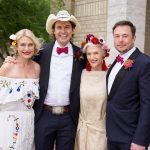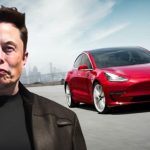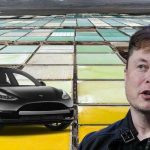Tesla: Elon Musk and the Electric Vehicle Revolution
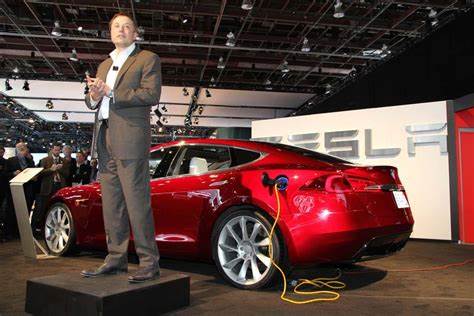
Tesla: Elon Musk and the Electric Vehicle Revolution
How Elon Musk Transformed the Entire Automotive Industry with Tesla
Elon Musk’s impact on the automotive world through Tesla is nothing short of a modern-day industrial saga—a tale of audacity, innovation, and relentless ambition that turned a fledgling startup into a global juggernaut. When Musk joined Tesla Motors (now Tesla, Inc.) in 2004 as Chairman and primary investor, shortly after its founding by Martin Eberhard and Marc Tarpenning, the company was little more than a bold idea scribbled on a napkin: to accelerate the world’s transition to sustainable energy through electric vehicles (EVs). Musk didn’t just fund this vision—he seized the reins, becoming CEO in 2008 and steering Tesla into uncharted territory. Under his leadership, Tesla didn’t merely disrupt the traditional car industry; it rewrote the rules of transportation, proving that electric dreams could outpace gasoline giants. What began as a niche experiment has blossomed into a revolution, with Musk as its unrelenting architect.
From Vision to Reality 🚗⚡
Tesla’s journey kicked off with a jolt in 2008: the Tesla Roadster. This wasn’t your average electric car—it was a high-performance sports car that roared onto the scene with a mission to shatter stereotypes. Before the Roadster, EVs were dismissed as sluggish golf carts or impractical novelties, their batteries wheezing after a few miles. The Roadster flipped that script. With a range exceeding 200 miles per charge—a first for a production EV—and a 0-to-60 mph sprint in under 4 seconds, it rivaled gas-powered icons like the Porsche 911. Its sleek, Lotus-inspired design didn’t hurt either. Priced at over $100,000, it wasn’t for the masses, but that wasn’t the point. The Roadster was a proof of concept—a gleaming beacon that declared electric cars could be fast, sexy, and desirable. Only 2,450 were built, but their impact echoed far beyond the numbers, laying the foundation for Tesla’s grander mission: to make EVs mainstream.
Musk’s strategy was as audacious as it was methodical. He didn’t aim to flood the market with cheap EVs out of the gate—that would come later. Instead, he started at the top, using high-end models to fund the technology that would eventually democratize electric driving. The Roadster was the opening act, but the real game-changer arrived in 2012: the Tesla Model S. This luxury sedan wasn’t just a car—it was a manifesto on wheels. Boasting a range of up to 370 miles in its early iterations (later stretched to over 400), a touchscreen dashboard the size of a small TV, and acceleration that could humiliate supercars (0-to-60 in as little as 2.4 seconds in later versions), the Model S redefined electric performance. It wasn’t just about specs, though—it was about experience. The quiet hum of its electric motors replaced the roar of combustion, offering a serene yet thrilling ride. Critics raved, and awards piled up—Motor Trend’s Car of the Year, Consumer Reports’ highest-ever rating—while legacy automakers scrambled to respond. The Model S didn’t just compete with gasoline cars; it set a new benchmark, forcing the industry to wake up or get left behind.

Scaling Up and Innovating 🌍
Tesla didn’t rest on its laurels. Musk pushed the company to broaden its reach, rolling out a lineup that blended innovation with accessibility. In 2015, the Model X arrived—an all-electric SUV with falcon-wing doors that opened upward like a spaceship, offering seating for seven and a range topping 300 miles. It was quirky, luxurious, and packed with tech, from its panoramic windshield to its self-driving potential. Then came the Model 3 in 2017, Tesla’s bid for the mass market. Priced around $35,000 (before incentives), it traded some luxury for affordability without sacrificing the essentials: a 250-mile base range (later boosted to over 300), brisk acceleration, and that signature Tesla flair. The Model 3 struck gold—by 2019, it was the best-selling EV globally, outselling gas-powered rivals in key markets like California and Norway. Production hiccups—infamously dubbed “production hell” by Musk—tested Tesla’s resolve, but the payoff was seismic: EVs were no longer a rich man’s toy but a viable choice for everyday drivers.
The Model Y, launched in 2020, cemented Tesla’s dominance. This compact crossover blended the Model 3’s affordability with SUV practicality, quickly becoming a top seller in the U.S. and beyond. By 2023, Tesla’s lineup covered nearly every segment—sports cars, sedans, SUVs—leaving no excuse for gas-powered holdouts. But Musk’s genius wasn’t just in the cars; it was in the ecosystem he built around them. The Supercharger network, launched in 2012, tackled the Achilles’ heel of EVs: range anxiety. These fast-charging stations, capable of adding 200 miles in 15 minutes, sprouted across highways and cities, growing to over 50,000 chargers worldwide by 2025. Tesla also pioneered over-the-air (OTA) software updates—a stroke of brilliance that let cars evolve post-purchase. A Model S from 2012 could gain range, speed, or even self-driving features years later, a trick traditional automakers couldn’t match. It was as if Tesla cars were living organisms, improving with age while gas cars rusted in obsolescence.
Disrupting the Industry 🔥
Musk’s relentless drive turned Tesla into a battering ram against the automotive status quo. Traditional carmakers leaned on a century-old playbook: sprawling dealership networks, incremental upgrades, and a cozy reliance on internal combustion. Tesla torched that script. By selling directly to consumers—bypassing dealers—Musk cut costs and controlled the customer experience, though not without legal battles from states clinging to franchise laws. Then came the Gigafactories: massive, futuristic plants churning out batteries, motors, and vehicles at unprecedented scale. The first, in Nevada, slashed lithium-ion battery costs by 30% through economies of scale, making EVs cheaper to produce. Shanghai’s Gigafactory, built in under a year, flooded China—the world’s largest auto market—with Teslas. By 2023, new factories in Berlin and Texas pushed Tesla’s capacity past 2 million vehicles annually, a fraction of Toyota’s output but enough to send shockwaves.
The numbers tell the story: Tesla’s market value soared past $1 trillion in 2021, surpassing Toyota, Ford, and GM combined, despite producing fewer cars. Investors didn’t just see a car company—they saw a tech titan, a disruptor betting on a future where EVs rule. The ripple effect was seismic. Volkswagen poured billions into its ID series, GM pivoted to an all-electric lineup by 2035, and Ford’s Mustang Mach-E took direct aim at Tesla’s turf. By 2025, EVs accounted for over 20% of global car sales, a leap fueled by Tesla’s trailblazing. Musk didn’t just compete—he forced an industry of dinosaurs to evolve or face extinction, sparking a race to electrification that reshaped the automotive landscape.

A Legacy of Sustainability 🌱
Beyond profits and horsepower, Tesla under Musk has championed a grander cause: sustainability. EVs are the spearhead, slashing tailpipe emissions in a world choking on carbon. A single Model 3, over its lifetime, can cut CO2 output by 50 tons compared to a gas car, and Tesla’s fleet—over 5 million strong by 2025—amplifies that impact. But Musk’s vision stretches further. The Powerwall, a home battery, stores solar energy to power houses and charge cars, while the Solar Roof turns rooftops into mini power plants. Together, they form a clean-energy ecosystem, weaving EVs into a tapestry of renewable living. Musk’s ultimate goal? To wean humanity off fossil fuels, combat climate change, and prove that green tech can be profitable—one electric mile at a time.
Challenges remain. Battery production strains global supply chains, mining lithium and cobalt with environmental and ethical costs. The grid, too, isn’t fully green—coal still powers some Superchargers, though Tesla’s solar investments aim to close that gap. Yet these are footnotes in a larger story. Musk’s legacy isn’t perfection—it’s progress, a bold leap toward a future where cars don’t just drive but heal the planet.
The Electric Revolution Unleashed
Elon Musk turned Tesla from a scrappy startup into a global powerhouse, a name synonymous with innovation and rebellion. His blend of audacious goals—think colonizing Mars-level ambition—technological wizardry, and dogged determination didn’t just make Tesla a household name; it ignited a worldwide electric revolution. By 2025, Tesla’s influence is everywhere: in the EVs crowding city streets, in the charging stations dotting highways, in the boardrooms of Detroit and Stuttgart where execs plot their counterattacks. Musk didn’t invent the electric car—pioneers like GM’s EV1 beat him to it—but he made it irresistible, turning a niche curiosity into a cultural and industrial force. From the Roadster’s first spark to the Cybertruck’s armored roar, Tesla under Musk has redefined what’s possible, proving that the future doesn’t creep—it accelerates, leaving the past in its dust.
